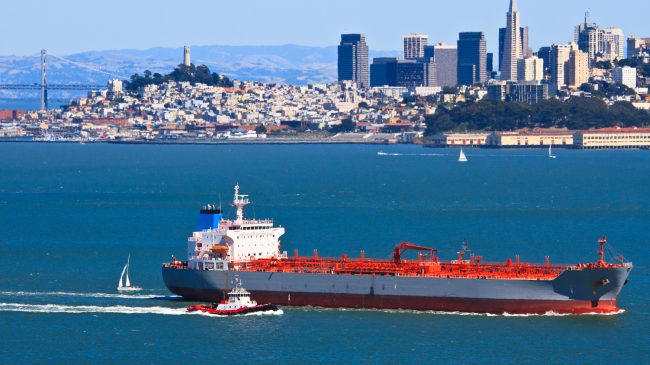Originally proposed in the 1940’s, a Southern Crossing of the San Francisco Bay has been discussed many times over the years. However, the bridge has never advanced past the planning stages due to its high costs — estimated to be $12.4 billion in 2012 dollars.
Recently, the proposal has resurfaced. In December 2017, Sen. Dianne Feinstein and East Bay Congressman Mark DeSaulnier urged the Metropolitan Transportation Commission (MTC) to consider the “tremendous challenges” Bay Area traffic poses on commuters.
“The traffic demands on our streets and transit systems have become intolerable. Quality of life is suffering,” they wrote.
According to MTC’s analysis, Bay Area freeway traffic has increased 80 percent since 2010, and it shows no sign of stopping.
This year, Bay Area voters may have the opportunity to address this issue. Regional Measure III proposes a $3 toll increase on all state-owned Bay Area bridges. If passed, the measure is expected to bring in $4.45 billion for transit and highway projects over the next 25 years, by funding projects that will alleviate the Bay Area’s congestion problems: expanding the rail car fleet for Bay Area Rapid Transit (BART), extending Caltrain to downtown San Francisco, adding more vessels to the San Francisco Bay Ferry fleet, as well as other infrastructure projects.
According to Feinstein and DeSaulnier, “While we appreciate the Regional Measure III effort, we do not think it comes anywhere close to addressing one of the most significant traffic problems facing the Bay Area – namely, the need for an additional route across the Bay for both BART and vehicular traffic.”
For Feinstein and DeSaulnier, a second bridge connecting the East Bay and the Peninsula would alleviate the congestion in the most needed areas.
Critics of a Southern Crossing cite not only the cost but also the potential increase in overall traffic. If the purpose of the new bridge is to alleviate current traffic, some critics wonder if the plan might induce demand, as commuters take advantage of the new route. Others claim the Bay Area is in desperate need of additional BART lines, not an additional vehicular bridge. But no one doubts the need for large-scale infrastructure expansions or improvements in the region.
A Southern Crossing’s projected $12.4 billion price tag seems colossal, but to put this in perspective, BART’s project of replacing older rail cars—which would be partly funded under Regional Measure III—is projected to cost between $3.4 and $4 billion. This is just the cost of replacing rail cars, not creating additional lines. As Regional Measure III makes its way onto ballots later this year—potentially affecting thousands of Bay Area commuters—it is worth considering the merits of a Southern Crossing.
A Southern Crossing would connect Interstate 380 in San Bruno to Interstate 238 in San Leandro. It is an expensive and comprehensive option aimed at combating the Bay Area’s extreme congestion problem. Although critics worry the bridge may itself increase traffic, they fail to realize that Bay Area traffic is projected to get worse, bridge or no bridge. The new bridge could accommodate an increase in commuters. Even if the bridge were to create a temporary influx of commuters, those commuters would be subject to the new bridge tolls, adding economic activity to the area. Most importantly, the innovative design of the bridge would transport both vehicular traffic and BART lines, retaining and potentially even increasing public transportation commuters.
With 34 percent of the Bay Area’s bridge users choosing the Bay Bridge, an alternative route across the bay that helps relieve traffic congestion is a worthwhile solution. In a 2017 poll, 74 percent of Bay Area voters stated that they were willing to pay higher bridge tolls if the tolls funded large-scale projects aimed at improving traffic. Regional Measure III’s proposed $3 toll increase is not insubstantial. The current, not finalized, Regional III proposal does not include allocating funding for a second bridge. Even if it did, additional funding would be needed to finance the bridge’s construction cost. Still, committee members should consider using Regional Measure III’s to partly fund the “mega-measure.” Congressman DeSaulnier warns, “If they raise the tolls and this isn’t part of it, the window of opportunity for building another bridge is lost for another 20 or 30 years.”

